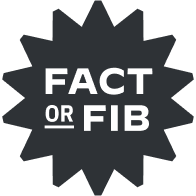The U.S. was the first country to do this...
Friday, March 8, 2024
 Make every day more interesting. Each day a surprising fact opens a world of fascinating information for you to explore. Did you know that….?
Make every day more interesting. Each day a surprising fact opens a world of fascinating information for you to explore. Did you know that….? 









| Original photo by danielfela/ Shutterstock |
| The U.S. was the first nation to use the term "President" for its head of state. | Once the U.S. finally secured its independence from Great Britain with the signing of the Treaty of Paris in 1783, the new country had to invent lots of things from scratch, including its form of government, its rules and laws, and even what to call its leader. The title "president" — derived from the Latin praesidere, which means "to sit before" — had usually been reserved for heads of colleges or ceremonial titles in congresses or committees. (John Hancock was president of the Second Continental Congress, for example.) Before American independence, leaders of European countries were called kings, queens, emperors, dukes, or even Lord Protectors (during England's more revolutionary years), but never "president."
Article II of the U.S. Constitution enshrined the title "President," reflecting the democratic sentiments of post-revolutionary America. However, the country's founding document didn't solve all the intricacies related to the title. In the spring of 1789, Congress debated exactly how to address the President. John Adams, then Vice President and head of the Senate, hand-picked a committee that thought the title "His Highness, the President of the United States of America, and Protector of the Rights of the Same" (or something similar) put George Washington on even footing with his royal European peers, but many other lawmakers thought the title too monarchical. (Thomas Jefferson called it "the most superlatively ridiculous thing I ever heard of.") Instead, Washington opted for just plain "President of the United States." Decades later, Haiti followed suit by naming its leader "president" in 1807. Today, dozens of countries use the title for their heads of state.
|
|
 | | The U.S. was the first country to form a republic. | | |
|
|
| The U.S. was the first country to form a republic. |  |  |
|
|
|
|
|
| Not Your Grandpa's Hearing Device | | What happens when you combine German engineering with the world's most trusted name in hearing care? The biggest breakthrough in hearing technology in more than a decade. Introducing the Horizon IX hearing aid. Horizon IX by hear.com is the world's first dual processing hearing aid, which separates speech and background noise to deliver never-before-heard clarity. The best part? The Horizon IX hearing aids are nearly invisible, tucked away inside or behind the ear, so you can enjoy perfect hearing without the burden of uncomfortable (or awkward) hearing devices. Bluetooth/smartphone connectivity and fully rechargeable, Award-winning customer service, Insurance and flexible finance options available. See if you qualify for a 45-day no-risk trial of the award-winning Horizon IX hearing devices! |
|
|
|
| The acronym POTUS probably became popular thanks to the __. |  |
|
|
 | Numbers Don't Lie |
|
 | | Annual salary of the U.S. President (along with a $50,000 expense account) | | $400,000 |
|
|  | | Year Martin van Buren became the first U.S.-born citizen to be elected U.S. President | | 1836 |
|
|
|
 | | Number of electoral votes won by Ronald Reagan in the 1984 election (the most in U.S. history) | | 525 |
|
|  | | Number of positions in the presidential line of succession | | 18 |
|
|
|
|
|
 | The U.S. President never had a "Big Red Phone" during the Cold War. |
|
| If you've seen a Cold War thriller or two, you've likely spotted the "Big Red Phone," a rotary device connected from the Oval Office in Washington, D.C., to Red Square in Moscow, to be used in the event of a nuclear crisis. Although no physical red phone existed, the concept of a Moscow-Washington hotline is very real. After the nearly disastrous events of the Cuban missile crisis in 1962, government officials decided that it'd be a good idea to have more seamless communication between the leaders of the world's two nuclear superpowers. The first hotline was actually a teletype machine that became operational on August 30, 1963, with the uninspiring yet practical message: "The quick brown fox jumped over the lazy dog's back 1234567890." (The odd phrase was used because it contains every letter in the alphabet.) The machine was never used to avert nuclear disasters, though a couple of Presidents took advantage of the direct line of communication to discuss various world events, like the Six-Day War in Israel in 1967 and the Soviet invasion of Afghanistan in 1979. A fax machine was added to the hotline in 1986. In 2008, messages could finally be sent over secure email. But in its 60 years of existence, a telephone was never part of the equation. | | |
|
|
|
| Thank you for supporting our advertisers. They help keep Interesting Facts free! |
|
|


posted by June Lesley at 5:32 AM


![]()
![]()
![]()
![]()
0 Comments:
Post a Comment
<< Home